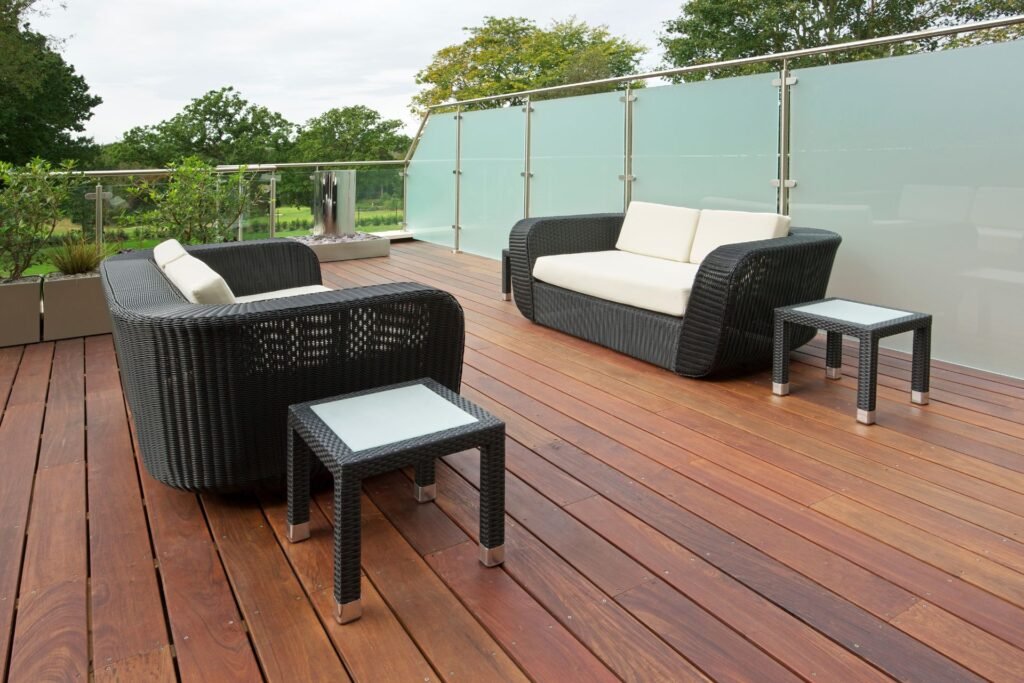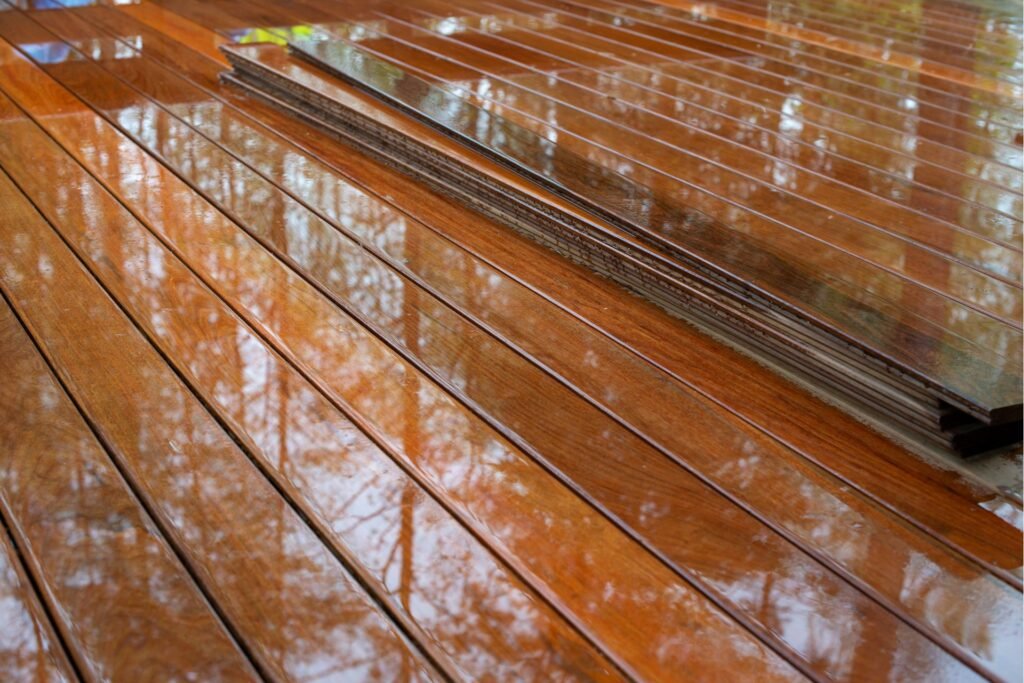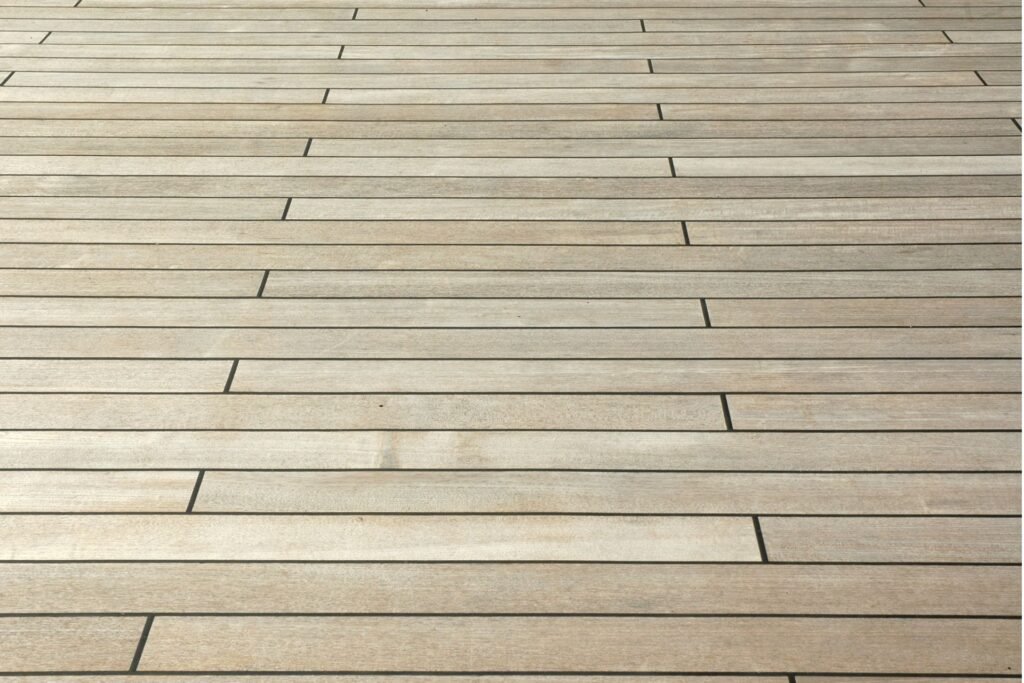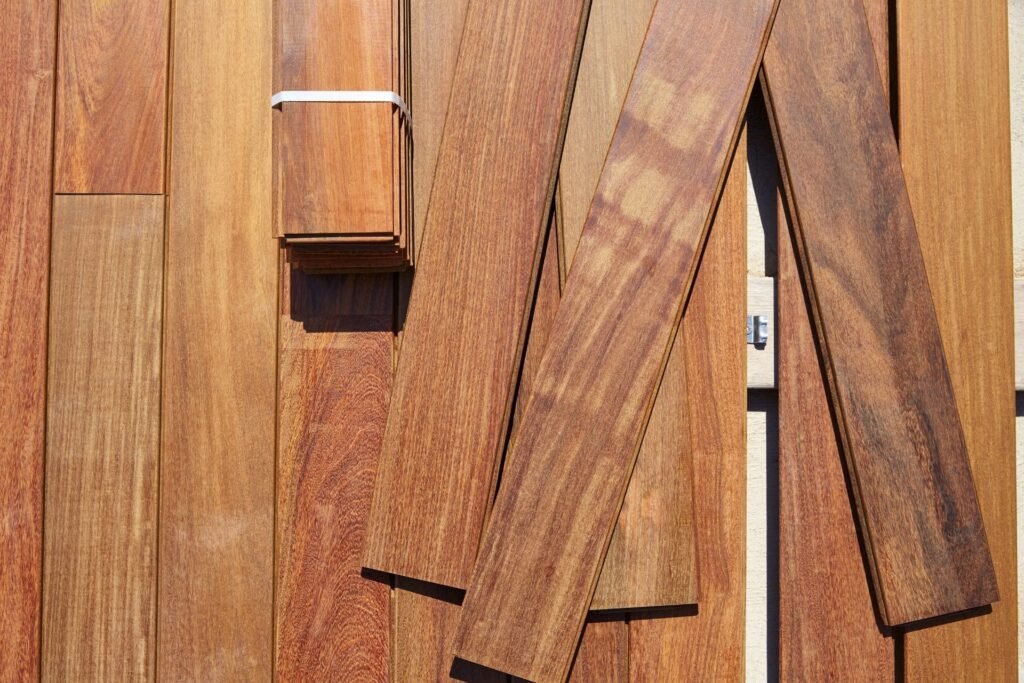Ultimate Guide To Types Of Decking In Australia
Welcome to the ultimate guide on the various types of decking available in Australia, where we delve into the heart of outdoor living and the essence of Australian homes. Australia’s climate and lifestyle are uniquely suited for outdoor gatherings, leisure, and activities, choosing decking material not just a matter of aesthetics, but a crucial decision impacting the longevity, sustainability, and enjoyment of your outdoor spaces. In this comprehensive guide, we aim to explore the plethora of decking options at your disposal, highlighting the features, benefits, and considerations of each to help you make an informed decision. Whether you’re building a new deck from scratch or considering renovating an existing one, understanding the pros and cons of each decking type is essential. From the natural allure of timber to the low-maintenance appeal of composite materials, and the innovative alternatives in between, we’ve got you covered. So, let’s embark on this journey together, exploring the best decking solutions for the Australian way of life, ensuring your outdoor space not only looks spectacular but stands the test of time against the elements.
In Australia, the choice of decking material is critical due to the country’s unique climate and lifestyle, offering options from durable hardwoods like Merbau, Spotted Gum, and Jarrah, known for their natural beauty and resilience, to cost-effective softwoods such as treated Pine. For those seeking low-maintenance solutions, composite decking blends wood fibers with plastic to resist pests and decay, while innovative materials like aluminum, bamboo, and PVC provide benefits ranging from eco-friendliness to fire resistance. Selecting the ideal decking in Australia requires balancing considerations of maintenance, durability, aesthetics, and budget to enhance outdoor living spaces effectively.
Understanding Decking Needs In Australia
In the heart of Australian culture, outdoor living spaces hold a special place, embodying the essence of relaxation and the joy of gathering with friends and family. The allure of a well-designed deck, which seamlessly extends your living area into the natural beauty of the outdoors, cannot be overstated. It’s not just an extension of the home; it’s a lifestyle choice that reflects the Australian ethos of embracing nature and the outdoors.
The Significance of Outdoor Living Spaces in Australian Homes
Outdoor living spaces are integral to Australian homes, offering a tranquil retreat and a perfect venue for entertainment. The mild climate for much of the year encourages an outdoor lifestyle, making decks an essential feature of Australian living. Whether it’s a barbecue with friends, a quiet morning with a cup of coffee, or watching the sunset, a deck provides the ideal setting. It’s where memories are made, highlighting the importance of thoughtful design and construction to ensure these spaces are not only beautiful but functional and resilient.
Factors to Consider When Choosing Decking Materials
Choosing the right decking material is crucial for the longevity and enjoyment of your outdoor space. Several factors come into play, each playing a pivotal role in the decision-making process:
Weather Conditions: Australia’s diverse climate, from the tropical north to the temperate south, means that the material chosen must withstand local weather conditions. UV resistance, moisture resistance, and the ability to handle temperature variations are key considerations.
Maintenance: The amount of maintenance you’re willing to undertake can significantly influence your choice of decking material. Some materials require regular staining and sealing, while others, like composite decking, offer a low-maintenance alternative that can save time and effort in the long run.
Durability: The longevity of your decking material is paramount. Durable materials may come with a higher upfront cost but can prove to be more cost-effective over time, reducing the need for repairs and replacement. Consider materials that are resistant to rot, pests, and wear from foot traffic.
Aesthetics: Your deck should complement your home’s architectural style and the surrounding landscape. The material’s color, texture, and overall look need to align with your personal taste and the aesthetic of your home to create a cohesive and inviting outdoor space.
In conclusion, understanding decking needs in Australia involves considering the unique lifestyle that outdoor living spaces offer to Australian homes. By carefully selecting decking materials that cater to local weather conditions, maintenance preferences, durability requirements, and aesthetic desires, homeowners can create outdoor spaces that enhance their quality of life and the value of their homes. With the right approach, a deck can be more than just an outdoor area; it can be a reflection of one’s home, style, and the backdrop to countless cherished moments.
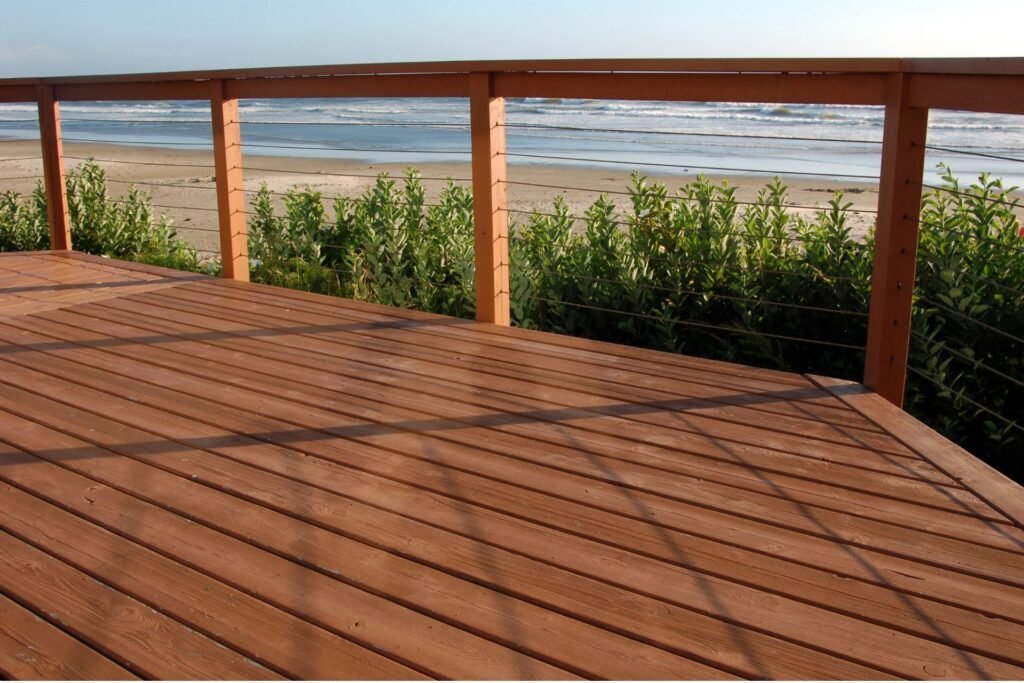
The Variety Of Decking Materials Available
In the quest to create the perfect outdoor space, the choice of decking material plays a pivotal role. Homeowners and builders in Australia are fortunate to have a plethora of options at their disposal, each with its unique attributes and aesthetic appeal. This article aims to explore the variety of decking materials available in Australia, offering a sneak peek into the depth we’ll dive into in the following sections.
Wooden Decking: A timeless choice, wooden decking brings warmth and natural beauty to any outdoor area. In Australia, popular wood types include Merbau, Spotted Gum, and Jarrah, known for their durability and resistance to weather and pests. We’ll explore the characteristics that make each wood type a favorite among homeowners.
Composite Decking: A modern alternative to traditional wood, composite decking is made from a blend of wood fibers and plastic. It boasts the beauty of wood without the high maintenance, offering resistance to fading, staining, and rotting. We will delve into the advantages of composite decking and why it’s becoming a go-to for many Australians.
Aluminum Decking: For those seeking a virtually maintenance-free option, aluminum decking emerges as a strong contender. Not only is it resistant to weather and pests, but it also provides a modern, sleek look. We’ll discuss the benefits of aluminum decking and its growing popularity in Australian homes.
Bamboo Decking: As a sustainable and eco-friendly option, bamboo decking is gaining traction in Australia. It offers a unique aesthetic and is known for its strength and durability, comparable to traditional hardwoods. Our forthcoming sections will cover the sustainability aspect of bamboo decking and its benefits.
Each decking material comes with its set of pros and cons, influenced by factors such as climate, maintenance, durability, and budget. In the following sections, we will provide an in-depth look at these materials, offering valuable insights to help you make an informed decision for your outdoor space. Whether you’re drawn to the natural charm of wood, the durability of composites, the low maintenance of aluminum, or the eco-friendliness of bamboo, our comprehensive guide will assist you in navigating the vast landscape of decking options available in Australia.
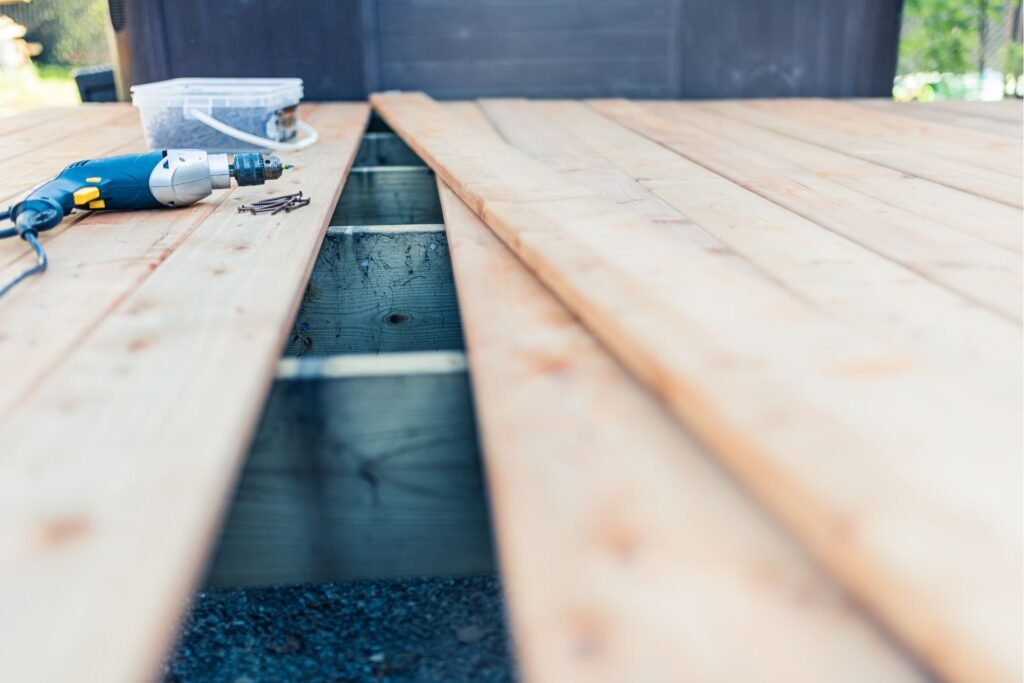
Timber Decking
In the world of outdoor living, timber decking holds a special place for homeowners seeking a blend of natural beauty and functionality. In this section, we delve into the intricacies of Timber Decking, offering insights into both hardwood and softwood options, their benefits, and factors to consider. Here’s a comprehensive guide to navigating your choices in timber decking.
Hardwood Decking: A Blend of Elegance and Durability
Hardwood decking is synonymous with luxury and longevity. Its rich textures and variety offer unparalleled aesthetic appeal, making it a top choice for those looking to elevate their outdoor spaces.
Popular Hardwood Types
Among the myriad of options, certain hardwoods stand out for their beauty and robustness:
Merbau: Known for its striking reddish-brown hue, Merbau is a popular choice for its durability and resistance to decay.
Spotted Gum: This hardwood is favored for its unique patterns and high density, making it ideal for areas subject to heavy foot traffic.
Jarrah: With its deep red color, Jarrah is not just visually appealing but also highly resistant to rot and termites.
Benefits and Considerations
Opting for hardwood decking comes with its set of advantages and considerations:
Natural Beauty: The distinctive textures and colors of hardwoods add a warm, inviting look to any outdoor area.
Durability: Hardwoods are well-regarded for their strength and longevity, capable of withstanding the elements for years.
Maintenance: To preserve its beauty, hardwood decking requires regular maintenance, including oiling and sealing.
Cost: The superior qualities of hardwood come with a higher price tag, making it an investment in your property’s aesthetic and value.
Softwood Decking: Practicality and Affordability
For those looking for a cost-effective yet aesthetically pleasing decking solution, softwood decking presents a viable alternative. It offers the warmth and charm of wood at a more accessible price point.
Softwood Options
Treated Pine: The most common softwood decking material, treated pine is versatile and can be stained or painted to match any design aesthetic.
Pros and Cons
Softwood decking brings its own set of benefits and drawbacks:
Cost-Effectiveness: Softwood is significantly more affordable than hardwood, making it an attractive option for budget-conscious homeowners.
Ease of Installation: Softwood is lighter and easier to work with, reducing installation time and labor costs.
Lower Durability: Compared to hardwood, softwood is less resistant to wear and weather, necessitating more frequent replacements.
Higher Maintenance: To extend its lifespan, softwood decking requires regular maintenance, including painting or staining to protect against rot and insect damage.
Making the Right Choice
Selecting between hardwood and softwood decking depends on various factors, including budget, maintenance preferences, and the desired aesthetic. Both options offer unique benefits, whether you prioritize the unparalleled elegance and durability of hardwood or the affordability and practicality of softwood.
When planning your decking project, consider not just the initial cost but also the long-term maintenance and the impact on your home’s value and appearance. Regardless of your choice, timber decking can transform your outdoor space into a beautiful, functional area for relaxation and entertainment.
By understanding the characteristics, benefits, and considerations of both hardwood and softwood decking, homeowners can make informed decisions that align with their lifestyle and budget. Whether you aspire to create a luxurious retreat or a cozy outdoor living space, the right timber decking can bring your vision to life.

Composite Decking
In the quest for the perfect outdoor living space, homeowners and builders alike are constantly on the lookout for materials that combine beauty, durability, and ease of maintenance. Enter composite decking, a modern solution that has been gaining popularity for its ability to meet these diverse needs. But what exactly is composite decking, and what makes it a contender in the decking material showdown? Let’s dive deep into the world of composite decking, exploring its ins and outs, its advantages, and its drawbacks.
What is Composite Decking?
Composite decking is a man-made building product that includes an equal mix of recycled wood fibers and recycled plastic. This ingenious blend capitalizes on the strength and aesthetic of wood while leveraging the durability and resilience of plastic. The result is a material that mimics the look of wood but with a slew of performance benefits that traditional lumber can’t match. Manufacturers can even adjust the components to meet specific style, color, and texture preferences, making it a versatile option for various decking projects.
Advantages of Composite Decking
Composite decking comes with a host of benefits that address some of the traditional pitfalls of natural wood decking. Here are the key advantages:
Low Maintenance: One of the most significant selling points of composite decking is its low maintenance requirements. Unlike wood, it doesn’t need to be stained, painted, or sealed regularly. A simple cleaning with soap and water is all it takes to keep your deck looking new.
Resistance to Pests and Rot: Thanks to its plastic content, composite decking is highly resistant to rot, decay, and insect infestations. This resistance extends the lifespan of your deck, making it a smart investment for the long term.
Durability: Composite decking is designed to withstand the elements – from scorching sun to heavy rain and snow. This durability means less warping, fading, and cracking over time, preserving the integrity and appearance of your deck.
Environmentally Friendly: With a composition that includes recycled materials, composite decking is a greener choice. It helps reduce waste and doesn’t contribute to deforestation.
Disadvantages of Composite Decking
Despite its many benefits, composite decking is not without its drawbacks. Consider these points before making your decision:
Higher Upfront Cost: The initial investment in composite decking is typically higher than that of traditional wood. However, when factoring in the lower maintenance costs and longer lifespan, the overall expense may be comparable or even lower in the long run.
Less Natural Look: While composite decking has come a long way in mimicking the look of real wood, some homeowners still prefer the natural beauty and feel of genuine timber. Composite materials can sometimes lack the unique character and warmth of natural wood.
In conclusion, composite decking represents a compelling option for those seeking a durable, low-maintenance solution for their outdoor living spaces. While it might come with a higher upfront cost and a somewhat less natural look, its benefits of longevity, environmental friendliness, and ease of care make it an excellent choice for many homeowners. As with any significant investment, weigh the pros and cons to decide if composite decking aligns with your lifestyle and home improvement goals.

Alternative Decking Materials
When considering the construction or renovation of outdoor spaces, the choice of decking material is pivotal. Traditional wood decking, while popular, is not the only option available. In this comprehensive guide, we delve into the world of alternative decking materials, offering insights into their benefits and drawbacks to help homeowners make an informed decision.
The Modern Appeal of Aluminum Decking
Aluminum decking is increasingly gaining traction among homeowners looking for a combination of modern aesthetics and functionality. Its popularity can be attributed to several key advantages:
Durability: Aluminum decking stands out for its remarkable longevity. Unlike traditional wood, it does not rot, warp, or splinter over time, making it a wise investment for those looking for a long-lasting outdoor space.
Fire Resistance: For regions prone to wildfires or for homes that emphasize safety, aluminum’s fire-resistant properties offer an added layer of protection, giving homeowners peace of mind.
However, there are a few considerations to keep in mind:
Cost: Quality comes at a price, and aluminum decking is generally more expensive upfront than its wood and composite counterparts. However, its durability and low maintenance requirements can offset this initial investment over time.
Heat Retention: Aluminum can retain heat, making it potentially uncomfortable for bare feet in hot climates. Selecting lighter colors or applying a finish can help mitigate this issue.
Embracing Sustainability with Bamboo Decking
Bamboo decking is a testament to the industry’s shift towards more sustainable practices. Here’s why it’s worth considering:
Eco-Friendliness: Bamboo is a highly renewable resource, growing much faster than traditional hardwoods. Choosing bamboo decking contributes to reducing deforestation and the carbon footprint associated with decking materials.
Durability and Maintenance: Despite its eco-friendly nature, bamboo does not compromise on strength. It’s comparable to many hardwoods in terms of durability and can last many years with proper care. However, like any outdoor material, it requires maintenance to keep it looking its best.
Bamboo decking needs to be cleaned regularly and treated with UV protectants and water repellants to maintain its appearance and longevity.
The Versatile Choice of PVC and Plastic Decking
PVC and plastic decking are synthetic options that cater to homeowners looking for ease of maintenance and variety in design.
Low Maintenance: One of the primary benefits of PVC and plastic decking is their minimal maintenance requirements. These materials resist stains, mold, and mildew, and do not require sanding, staining, or sealing.
Design Variety: Available in a wide range of colors and textures, PVC and plastic decking can mimic the look of natural wood or offer unique aesthetic options for personalized outdoor spaces.
However, it’s important to consider the environmental aspect:
Environmental Impact: The production and disposal of PVC and plastic materials raise concerns regarding their environmental footprint. For eco-conscious homeowners, it’s crucial to weigh the benefits of low maintenance against the potential environmental impacts.
Alternative decking materials offer a range of options beyond traditional wood decking. Whether prioritizing durability, fire resistance, eco-friendliness, or low maintenance, there’s an alternative decking material to meet every homeowner’s needs and preferences. By understanding the benefits and considerations associated with aluminum, bamboo, and PVC/plastic decking, making an informed choice for your outdoor space becomes a simpler, more confident process.

Choosing The Right Decking For Your Home
When it comes to elevating the outdoor living space of your home, selecting the right decking plays a pivotal role. The choice of decking material not only impacts the aesthetic appeal of your exterior space but also its functionality and longevity. With a myriad of options available, it’s crucial to make an informed decision that aligns with your lifestyle, budget, and design preferences. In this guide, we delve into essential considerations and tips to help you choose the perfect decking for your home, ensuring that your outdoor space is both beautiful and durable.
Understand Your Lifestyle Needs
First and foremost, consider how you plan to use your deck. Is it going to be a tranquil retreat for reading and relaxation or a bustling hub for entertaining family and friends? If you anticipate heavy foot traffic or frequent outdoor dining, materials that withstand wear and tear and are easy to clean, such as composite decking, might be your best bet. On the other hand, if aesthetics are your primary concern, natural wood decking offers unmatched beauty and warmth.
Set a Realistic Budget
Decking materials vary widely in cost, from affordable pressure-treated wood to premium composite or hardwood options. While it’s tempting to choose the cheapest materials to save on upfront costs, consider the long-term perspective. Higher-end materials like composite decking may have a steeper initial cost but often require less maintenance and have a longer lifespan, potentially saving you money in the long run.
Reflect on Aesthetic Preferences
Your deck should complement your home’s architectural style and outdoor environment. Woods like cedar and redwood offer a classic, natural look but may require regular maintenance to preserve their color and prevent decay. Composite decking, available in various colors and textures, can mimic the look of wood without the same level of upkeep, making it a popular choice for homeowners seeking both beauty and convenience.
Consult with Decking Specialists
Navigating the wide array of decking materials and options can be overwhelming. Seeking advice from decking specialists or contractors can provide valuable insights into the benefits and drawbacks of different materials. These professionals can assess your specific needs, recommend suitable options, and provide estimates on costs and installation, helping you make an informed decision.
Consider Future Maintenance and Durability
Maintenance requirements can vary significantly between decking materials. Wood decks may require annual cleaning, staining, and sealing to maintain their appearance and durability. In contrast, composite decks are more resistant to fading, staining, and rotting, requiring less frequent maintenance. Additionally, consider the climate in your area. Materials that are resistant to moisture, temperature fluctuations, and pests will ensure your deck remains in top condition for years to come.
In conclusion, choosing the right decking for your home involves a careful consideration of your lifestyle, budget, aesthetic preferences, and the future maintenance you’re willing to undertake. By consulting with specialists and weighing the pros and cons of each material, you can select a decking option that enhances your outdoor living space, stands the test of time, and brings joy to your home life. Remember, the right deck not only adds value to your home but also creates a cherished space for making memories with loved ones.
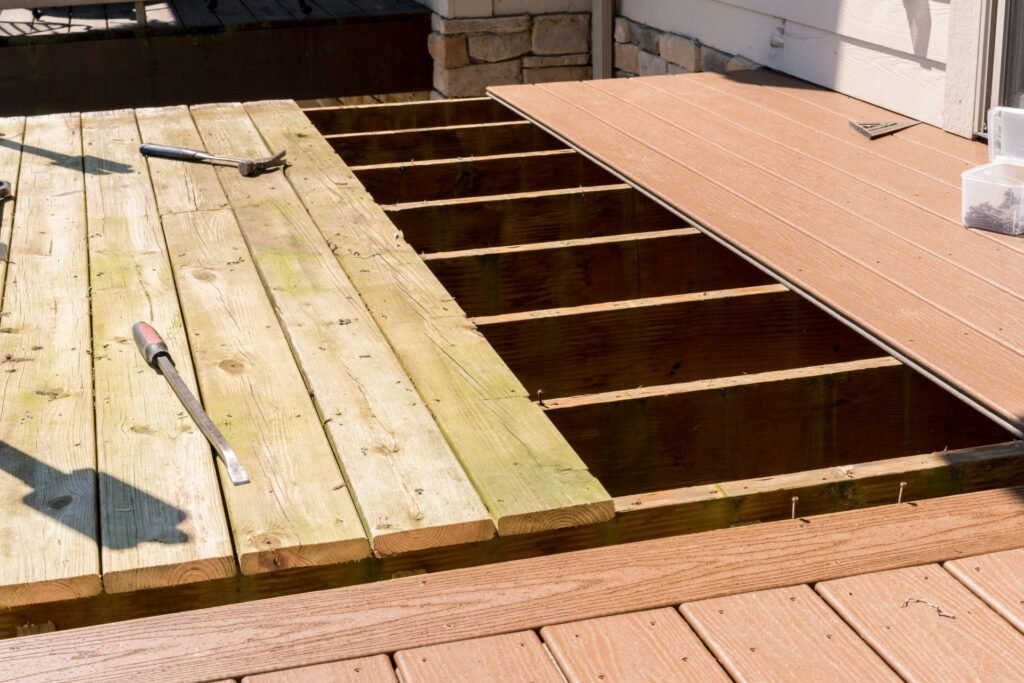
Installation And Maintenance
Whether you’re a homeowner looking to enhance your outdoor living space or a contractor aiming to deliver top-notch services, understanding the intricacies of decking installation and maintenance is key. Decking, a pivotal element in outdoor design, comes in various materials, each requiring specific installation techniques and care. In this section, we delve into the installation processes for different decking types and share expert maintenance tips to ensure your decking remains in pristine condition for years to come.
Installation Process: A Material-Wise Breakdown
Wooden Decking
The timeless appeal of wood decking, be it pressure-treated pine, cedar, or exotic hardwoods, necessitates a classic installation approach. Start by constructing a solid foundation, ensuring that the ground is level and stable. Use a framework of joists to provide support, spacing them according to the type of wood and expected load. Planks are then securely attached to the joists using decking screws or nails, with special attention to spacing for natural expansion and contraction.
Composite Decking
Composite decking, celebrated for its durability and low maintenance, demands a slightly different installation technique. Similar to wood, it requires a sturdy foundation and joist framework. However, composite boards often utilize hidden fastening systems, which allow for a seamless finish without visible screws. Expansion gaps are crucial here as well, though they may vary based on the composite material’s specific guidelines.
PVC and Vinyl Decking
For those opting for PVC or vinyl decking, the process aligns closely with that of composite decking, focusing on a robust foundation and joist structure. The difference lies in the fastening – PVC and vinyl decking materials often require specific types of fasteners to prevent material damage. Following the manufacturer’s instructions for spacing and fastening is paramount to ensure longevity and aesthetic appeal.
Maintenance Tips to Prolong Decking Life
Wood Decking Maintenance
Wood decking, while beautiful, requires regular upkeep to retain its charm. Annual cleaning with a wood cleaner can remove grime and prevent mold growth. Staining or sealing every two to three years protects against moisture and UV damage. Inspect your deck seasonally for any signs of wear, including loose boards or protruding nails, and address these issues promptly to prevent further damage.
Composite Decking Care
Composite decking’s maintenance is notably less demanding. Regular sweeping and occasional washing with soap and water are usually sufficient to keep it looking new. Avoid using harsh chemicals or pressure washing, which can damage the surface. Although composite decking is resistant to many outdoor elements, it’s wise to remove any stains or spills quickly to prevent permanent marks.
PVC and Vinyl Decking Upkeep
Like composite, PVC and vinyl decking thrive with minimal maintenance. Routine cleaning with soap and water will maintain its appearance without the need for staining or sealing. Be vigilant about removing sharp objects and furniture without proper padding, as PVC and vinyl can be prone to scratches. Check the manufacturer’s guidelines for care recommendations, especially for stain removal.
In conclusion, the joy of a beautiful, durable deck starts with proper installation and is maintained through regular care. By understanding the nuances of installing different decking materials and adhering to tailored maintenance routines, you can ensure your deck remains a cherished part of your outdoor space for many years. Whether you’re embarking on a DIY project or consulting with professionals, this guide serves as your roadmap to decking success.
In crafting content like this, remember the importance of a conversational tone, clarity, and providing value to the reader. Tailoring your approach to cater to specific materials not only showcases expertise but also guides homeowners and professionals alike through the nuances of decking projects, ensuring their efforts result in lasting beauty and functionality.

Decking Trends In Australia
In the heart of Australia’s vibrant outdoor culture, decking trends have evolved significantly, mirroring the nation’s commitment to sustainability, innovative design, and the timeless joy of alfresco living. As homeowners and designers alike search for decking solutions that marry aesthetics with environmental responsibility, several key trends have emerged to define the Australian decking scene. This article delves into the current trends in decking across Australia, including the rise of eco-friendly materials, the popularity of mixed-material decks, and the embrace of innovative design approaches. By understanding these trends, homeowners can make informed choices that enhance their outdoor spaces while aligning with broader environmental and aesthetic values.
Eco-Friendly Materials: A Sustainable Choice
In response to growing environmental concerns, eco-friendly materials have surged to the forefront of decking trends in Australia. Composite decking, made from a blend of recycled wood fibers and plastics, is leading the charge. Not only does it reduce waste by repurposing materials that would otherwise end up in landfills, but it also offers durability and ease of maintenance that outperforms traditional timber in many respects. Australian homeowners are increasingly drawn to composite decking as a way to enjoy the beauty and functionality of their outdoor spaces without compromising on environmental values.
Mixed-Material Decks: Blending Functionality with Aesthetics
Another trend gaining momentum is the use of mixed materials in deck construction. This approach combines different materials, such as timber with metal or composite with glass, to create unique, visually appealing outdoor areas. Mixed-material decks not only offer versatility in design but also enhance functionality by utilizing the strengths of each material. For example, the combination of timber for warmth and natural beauty with metal for structural integrity allows for innovative designs that withstand the test of time. This trend reflects the Australian penchant for creativity in outdoor living spaces, providing endless possibilities for personalization.
Innovative Design Approaches: Beyond the Traditional
Moving beyond traditional rectangular or square decks, Australian homeowners and designers are exploring more innovative design approaches. Curved decks, multi-level layouts, and integrated seating are just a few examples of how decking in Australia is becoming more than just a space to place a barbecue. These designs cater to the Australian love for outdoor living, transforming decks into versatile outdoor rooms that seamlessly blend with the natural landscape. Innovative design approaches are not only about aesthetic appeal; they also maximize the use of space and enhance the functionality of outdoor areas, making them more accommodating for entertainment, relaxation, and connection with nature.
Catering to the Australian Love for Outdoor Living
These decking trends underscore a broader cultural affinity in Australia for outdoor living and sustainability. The move towards eco-friendly materials speaks to a national commitment to protecting the environment, while the embrace of mixed materials and innovative designs reflects a desire to enhance the quality and enjoyment of outdoor spaces. In a country where the outdoors is an integral part of the lifestyle, decking trends are more than just passing fashions they are a reflection of values and a way of life.
In conclusion, the current trends in decking in Australia ranging from eco-friendly materials and mixed-material decks to innovative design approaches offer exciting possibilities for homeowners looking to enhance their outdoor spaces. These trends not only cater to the Australian love for outdoor living but also align with the values of sustainability and creativity. By embracing these trends, homeowners can create outdoor areas that are not only beautiful and functional but also environmentally responsible and uniquely theirs.

FAQs: About How Much Does A Deck Cost Sydney
The most popular decking options in Australia include hardwood decking (such as Merbau, Spotted Gum, and Jarrah), softwood decking (like treated Pine), composite decking (a blend of wood fibers and plastic), and alternative materials such as aluminum, bamboo, and PVC decking. Each type offers different advantages in terms of durability, maintenance, and aesthetic appeal.
Hardwood decking is favored for its natural beauty, durability, and resistance to wear and tear, making it suitable for Australia’s harsh climate. Hardwoods like Merbau, Spotted Gum, and Jarrah also offer a long lifespan and can add significant value to your property.
Yes, composite decking can be worth the investment for homeowners looking for a low-maintenance option. It doesn’t require staining, sealing, or sanding and is resistant to pests, rot, and decay. While the upfront cost may be higher than timber, the long-term savings on maintenance can make it a cost-effective choice.
Softwood decking, such as treated Pine, is more cost-effective than hardwood but generally less durable. It’s easier to work with and install, making it a good option for DIY projects. However, it requires more maintenance to protect against the elements and may not last as long as hardwood.
Yes, bamboo decking is an eco-friendly option, as bamboo is a highly sustainable and rapidly renewable resource. Composite decking made from recycled wood and plastic is another environmentally friendly choice. Additionally, choosing locally sourced timber can also reduce the environmental impact.
Consider factors such as your budget, the climate in your area, maintenance requirements, and the aesthetic you wish to achieve. For harsh climates, durable materials like hardwood or composite may be best. If you’re on a tighter budget or planning a DIY project, softwood could be more suitable.
Hardwood decking requires periodic cleaning, sanding, and the application of a sealant or oil to protect against the elements and maintain its appearance. The frequency of maintenance depends on the wood type and the decking’s exposure to the elements.
Yes, composite decking can get hot when exposed to direct sunlight for extended periods. Lighter colors generally absorb less heat than darker colors. Some newer composite products are designed to minimize heat absorption, making them more comfortable in sunny conditions.
The lifespan of decking in Australia varies by material. Hardwood decking can last 20-40 years or more with proper maintenance, while composite decking can also have a long lifespan of around 25-30 years. Softwood decking typically has a shorter lifespan of 10-15 years.
Yes, decking construction in Australia must comply with local building codes and regulations, including obtaining the necessary permits. Requirements can vary by state and local council, so it’s important to check with your local authorities and possibly hire a professional to ensure compliance.
Conclusion
Selecting the right decking material for your Australian home is more than an aesthetic decision; it’s an investment in your home’s long-term value and enjoyment. Given Australia’s unique climate, from sun-soaked coasts to the rugged outback, the challenge lies in choosing a material that not only complements your style but also withstands the elements. This decision significantly affects your lifestyle, the sustainability of resources, and your property’s market value. As such, it’s crucial to consider not just the immediate appeal but the long-term implications of your choice, including maintenance needs and environmental impact. We encourage you to reflect on your needs and preferences and consider reaching out to a decking professional for advice tailored to your home’s specific characteristics. This approach ensures your deck is not only a beautiful extension of your home but also a durable and sustainable outdoor space. Share your decking experiences or seek professional guidance today, and take the first step towards realizing your dream deck, a space that embodies the resilience and beauty of the Australian outdoors.
Menu
- About
- Blog
- Contact Us
- Deck Builders Blue Mountains
- Patio Builders Blue Mountains
- Patio Builders Penrith
- Pergola Builders Blue Mountains
- Pergola Builders Penrith
- Privacy Policy
- Sitemap
- Terms And Conditions
About the Author:
Mike Veail is a recognized digital marketing expert with over 6 years of experience in helping tradespeople and small businesses thrive online. A former quantity surveyor, Mike combines deep industry knowledge with hands-on expertise in SEO and Google Ads. His marketing strategies are tailored to the specific needs of the trades sector, helping businesses increase visibility and generate more leads through proven, ethical methods.
Mike has successfully partnered with numerous companies, establishing a track record of delivering measurable results. His work has been featured across various platforms that showcase his expertise in lead generation and online marketing for the trades sector.
Learn more about Mike's experience and services at https://theleadguy.online or follow him on social media:

